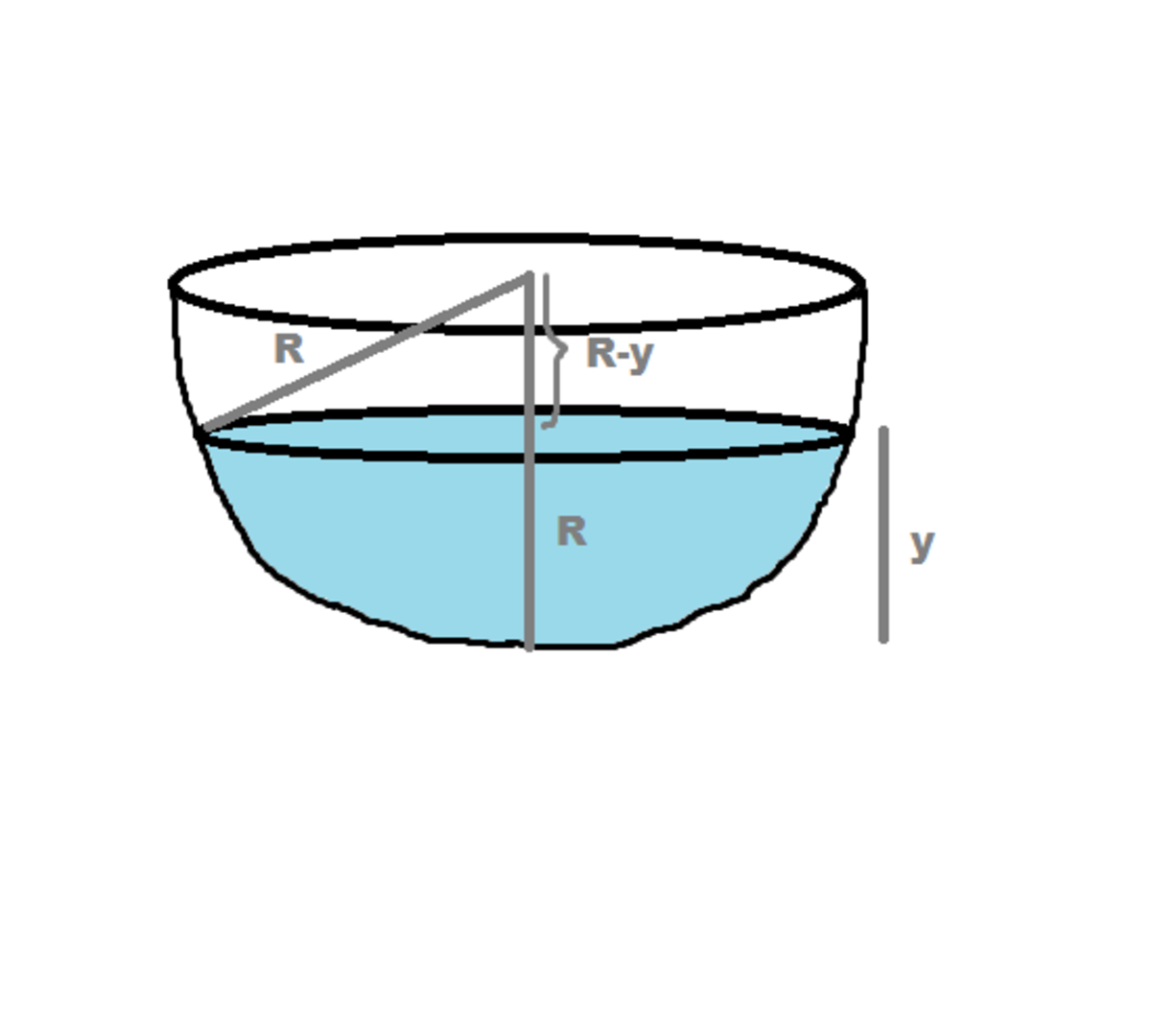Fluids with a pinch of calculus!
Consider a hemispherical tank of radius containing a non-viscous liquid of Density . A small hole is formed at the bottom of the tank and the area of cross section of the hole is . If the liquid starts dripping from the hole at time and if at time the tank is empty find the sum of digits of
Given that:
(i.e. Acceleration due to gravity)
Please share!!
For other problems by me, click here
This section requires Javascript.
You are seeing this because something didn't load right. We suggest you, (a) try
refreshing the page, (b) enabling javascript if it is disabled on your browser and,
finally, (c)
loading the
non-javascript version of this page
. We're sorry about the hassle.
Let at time t = t 0 the height of water from the bottom be y .
Using Torricelli's Theorem, Velocity of Efflux = v b o t t o m = 2 × g × y
Implies:
Rate of flow of liquid is:
d t d V b o t t o m = a × v b o t t o m = a × 2 × g × y
Moving to the top:
The rate of descent of height of liquid is − d t d y  From the diagram above:
From the diagram above:
Area of liquid is:
A = π × ( R 2 − ( R − y ) 2 )
A = π × ( 2 R y − y 2 )
Rate of loss of liquid is:
d t d V t o p = − d t d y × A = − d t d y × π × ( 2 R y − y 2 )
Hence by equation of continuity: d t d V t o p = d t d V b o t t o m
− d t d y × π × ( 2 R y − y 2 ) = a × 2 × g × y
− y d y × ( 2 R y − y 2 ) = π a × 2 × g d t
∫ R 0 − ( 2 R y − y 2 3 ) d y = ∫ 0 T π a × 2 × g d t
On total simplification we get,
T = 1 5 a 2 g 1 4 π × R 2 5
After substitution: We get:
T = 5 9 9 4 . 5 0 8 5 7
⌊ T ⌋ = 5 9 9 4
Sum of digits = 5 + 9 + 9 + 4 = 2 7